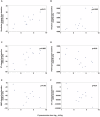Klebsiella pneumoniae induces dose-dependent shock, organ dysfunction, and coagulopathy in a nonhuman primate critical care model
- PMID: 39576068
- PMCID: PMC11708033
- DOI: 10.1128/mbio.01943-24
Klebsiella pneumoniae induces dose-dependent shock, organ dysfunction, and coagulopathy in a nonhuman primate critical care model
Abstract
Nonhuman primate models that closely emulate the disease course, pathogenesis, and supportive care provided to human patients in the modern intensive care unit with bacterial sepsis are urgently needed to study pathogenesis and assess novel therapies. We therefore developed a non-human primate model of septic shock that includes supportive care akin to a modern intensive care unit. In this study, we characterized pathogen kinetics and evaluated the physiologic, immunologic, and pathologic responses in this model of septic shock induced by the clinically relevant pathogen Klebsiella pneumoniae across a three-log dose range. We observed dose-dependent bacteremia and circulating levels of Klebsiella pneumoniae DNA and endotoxin. Tachycardia and hypotension occurred in all animals and the study endpoint occurred in 8 of 12 animals that were euthanized. The infused bacterial dose was significantly associated with the severity of renal insufficiency and coagulopathy. Neutrophil activation evidenced by increased CD11b expression, decreased CD62L expression, and increased circulating levels of myeloperoxidase, lactoferrin, and neutrophil extracellular traps; monocyte activation evidenced by increased circulating levels of interleukin-6, tumor necrosis factor-alpha, granulocyte-macrophage colony-stimulating factor, and monocyte chemotactic protein-1; and endothelial activation evidenced by increased circulating levels of syndecan-1 and angiopoietin-II were all consistent with human sepsis. Our model provides an opportunity to study pathogenesis and investigate novel therapeutics for the treatment of bacterial sepsis in the setting of modern supportive care.IMPORTANCEThere is currently a disconnect between the efficacy of sepsis therapies in pre-clinical animal models and human clinical trials. Therefore, developing nonhuman primate models that closely mimic human sepsis pathogenesis to study novel host-targeted therapeutics is a priority. In this study, we developed a model of septic shock with a clinically relevant bacteria (Klebsiella pneumoniae) that provides standard supportive care including mechanical ventilation, invasive hemodynamic monitoring, volume resuscitation, vasopressors, antibiotics, and steroids. In a dose-dependent manner, we observed that this model closely emulates the hemodynamic, end-organ dysfunction, and cellular and soluble responses associated with human sepsis. This validated model provides a unique opportunity to study the pathogenesis of acute septic shock and evaluate host-directed therapeutics in a large animal model that closely emulates the modern-day intensive care unit and supportive critical care.
Keywords: nonhuman primate; pathogenesis; sepsis; therapeutics.
Conflict of interest statement
The authors declare no conflict of interest.
Figures




Similar articles
-
Comparison of Septic Shock Due to Multidrug-Resistant Acinetobacter baumannii or Klebsiella pneumoniae Carbapenemase-Producing K. pneumoniae in Intensive Care Unit Patients.Antimicrob Agents Chemother. 2018 May 25;62(6):e02562-17. doi: 10.1128/AAC.02562-17. Print 2018 Jun. Antimicrob Agents Chemother. 2018. PMID: 29555630 Free PMC article.
-
Plasma granulocyte colony-stimulating factor and granulocyte-macrophage colony-stimulating factor levels in critical illness including sepsis and septic shock: relation to disease severity, multiple organ dysfunction, and mortality.Crit Care Med. 2000 Jul;28(7):2344-54. doi: 10.1097/00003246-200007000-00028. Crit Care Med. 2000. PMID: 10921563
-
Lipid peroxidation in Gram-negative bacteremia modulates the risk for septic shock and infections by resistant Klebsiella pneumoniae.Eur J Clin Microbiol Infect Dis. 2017 Nov;36(11):2171-2177. doi: 10.1007/s10096-017-3041-5. Epub 2017 Jun 21. Eur J Clin Microbiol Infect Dis. 2017. PMID: 28639164 Free PMC article.
-
Inflammation, coagulopathy, and the pathogenesis of multiple organ dysfunction syndrome.Crit Care Med. 2001 Jul;29(7 Suppl):S99-106. doi: 10.1097/00003246-200107001-00032. Crit Care Med. 2001. PMID: 11445742 Review.
-
Septic Shock and Purpura Fulminans Due to Streptococcus pneumoniae Bacteremia in an Unvaccinated Immunocompetent Adult: Case Report and Review.Am J Case Rep. 2020 Jun 9;21:e923266. doi: 10.12659/AJCR.923266. Am J Case Rep. 2020. PMID: 32513908 Free PMC article. Review.
References
-
- Rudd KE, Johnson SC, Agesa KM, Shackelford KA, Tsoi D, Kievlan DR, Colombara DV, Ikuta KS, Kissoon N, Finfer S, Fleischmann-Struzek C, Machado FR, Reinhart KK, Rowan K, Seymour CW, Watson RS, West TE, Marinho F, Hay SI, Lozano R, Lopez AD, Angus DC, Murray CJL, Naghavi M. 2020. Global, regional, and national sepsis incidence and mortality, 1990-2017: analysis for the Global Burden of Disease Study. Lancet 395:200–211. doi:10.1016/S0140-6736(19)32989-7 - DOI - PMC - PubMed
-
- Singer M, Deutschman CS, Seymour CW, Shankar-Hari M, Annane D, Bauer M, Bellomo R, Bernard GR, Chiche J-D, Coopersmith CM, Hotchkiss RS, Levy MM, Marshall JC, Martin GS, Opal SM, Rubenfeld GD, van der Poll T, Vincent J-L, Angus DC. 2016. The third international consensus definitions for sepsis and septic shock (Sepsis-3). JAMA 315:801–810. doi:10.1001/jama.2016.0287 - DOI - PMC - PubMed
-
- Evans L, Rhodes A, Alhazzani W, Antonelli M, Coopersmith CM, French C, Machado FR, Mcintyre L, Ostermann M, Prescott HC, et al. . 2021. Surviving sepsis campaign: international guidelines for management of sepsis and septic shock 2021. Crit Care Med 49:e1063–e1143. doi:10.1097/CCM.0000000000005337 - DOI - PubMed
MeSH terms
Substances
LinkOut - more resources
Full Text Sources
Research Materials
